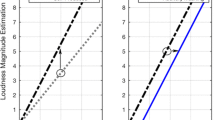Summary
This investigation deals with the temporal aspects of air volume changes during speech. Speech respiration differs fundamentally from resting respiration. In resting respiration the duration and velocity of inspiration (air flow or lung volume change) are in a range similar to that of expiration. In speech respiration the duration of inspiration decreases and its velocity increases; conversely, the duration of expiration increases and the volume of air flow decreases dramatically. The following questions arise: are these two respiration types different entities, or do they represent the end points of a continuum from resting to speech respiration? How does articulation without the generation of speech sound affect breathing? Does (verbalized?) thinking without articulation or speech modify the breathing pattern? The main test battery included four tasks (spontaneous speech, reading, serial speech, arithmetic) performed under three conditions (speaking aloud, articulating subvocally, quiet performance by trying to exclusively ‘think’ the tasks). Respiratory movements were measured with a chest pneumograph and evaluated in comparison with a phonogram and the identified spoken text.
For quiet performance the resulting respiratory time ratio (relation of duration of inspiration versus expiration) showed a gradual shift in the direction of speech respiration-the least for reading, the most for arithmetic. This change was even more apparent for the subvocal tasks.
It is concluded that (a) there is a gradual automatic change from resting to speech respiration and (b) the degree of internal verbalization (activation of motor speech areas) defines the degree of activation of the speech respiratory pattern.
Zusammenfassung
Die vorliegende Untersuchung befaßt sich mit den zeitlichen Aspekten der Atmungsvorgänge während des Sprechens. Die Sprechatmung unterscheidet sich grundsätzlich von der Ruheatmung. Bei der Ruheatmung liegt die Dauer und Geschwindigkeit der Einatmung (Luftfluß oder Volumenänderung der Lunge) in der gleichen Größenordnung wie bei der Ausatmung. Bei der Sprechatmung nimmt die Dauer der Einatmung ab und die Geschwindigkeit des Luftstroms entsprechend zu, während bei der Ausatmung die Dauer der Expiration zunimmt und die Geschwindigkeit des Luftstromes drastisch abnimmt. Hierbei entstehen verschiedene Fragen: Stellen diese Atemtypen zwei verschiedene funktionelle Einheiten dar, oder repräsentieren sie nur die Extreme eines Kontinuums von der Ruhezur Sprechatmung? Wie beeinflußt reine Artikulation ohne Lautproduktion die Atmung? Wie beeinflußt (verbalisiertes) Denken ohne Artikulation oder Sprechen das Atemmuster. Atembewegungen wurden mit einem Gürtelpneumographen registriert und zusammen mit dem Phonogramm und dem identifizierten Text ausgewertet. Die Untersuchungen umfaßten 4 Sprechaufgaben (Spontansprechen; Lesen; Reihensprechen; Rechnen), die unter 3 verschiedenen Konstellationen (lautes Sprechen; reines Artikulieren; leise „gedachte“ Ausführung) durchgeführt wurden.
Bei lautloser, gedachter Ausführung zeigte der Atemzeitquotient (Verhältnis von Einatmung zur Ausatmungsdauer) eine allmähliche Verschiebung in Richtung der Sprechatmung, am wenigsten für Lesen, am stärksten für Rechnen. Diese langsame Verschiebung war bei den subvokalen Aufgaben deutlich stärker ausgeprägt.
Aus den Untersuchungen wird geschlossen, daß es a) eine allmähliche automatische Verschiebung der Ruheatmung zur Sprechatmung gibt und b) daß das Ausmaß der internen Verbalisation (Aktivierung von motorischen Sprechzentren) das Ausmaß der Aktivierung der Sprechatmungsmuster bestimmt.
Similar content being viewed by others
References
Bouhuys, A., Proctor, D. F., Mead, J.: Kinetic aspects of singing. J. Appl. Physiol. 21, 483–496 (1966)
Bouhuys, A. (ed.): Sound production in man. Ann. NY Acad. Sci. 155, 1–381 (1968)
Draper, M. H., Ladefoged, P., Whitteridge, D.: Expiration pressures and air flow during speech. Br. Med. J. I, 1837–1843 (1960)
Golla, F. L., Antonovitch, S.: The respiratory rhythm in its relation to the mechanism of thought. Brain 52, 491–509 (1929)
Hixon, J.: Respiratory functions in speech. In: Normal aspects of speech, hearing and language, F. D. Minifie, T. J. Hixon, F. Williams, eds., pp. 73–125. Englewood Cliffs, N. J.: Prentice Hall 1973
Klatt, D. H., Stevens, K. N., Mead, J.: Studies of articulatory activity and airflow during speech. In: Sound production in man, A. Bouhuys, ed. Ann. NY Acad. Sci. 155, 1–381 (1968)
Klestadt, X.: Zur qualitativen Analyse der Sprechatmung. Z. Hals-Nasen-Ohrenheilk. 12, 257–277 (1923)
Isshiki, N., Ringel, L.: Air flow during the production of selected consonants. J. Speech Hear. Res. 7, 233 (1964)
Proctor, D. F.: Breathing mechanics during phonation and singing. In: Ventilatory and phonatory control systems, B. Wyke, ed., pp. 39–57. London-New York-Toronto: Oxford University Press 1974
Schilling, R.: Untersuchungen über die Atembewegungen beim Sprechen und Singen. Mschr. Ohrenheilk. und Laryngol. Rhinol. 59, 1–6 (1925)
Wyke, B. (ed.): Ventilatory and phonatory control systems. London-New York-Toronto: Oxford University Press 1974
Author information
Authors and Affiliations
Rights and permissions
About this article
Cite this article
Conrad, B., Schönle, P. Speech and respiration. Arch. Psychiat. Nervenkr. 226, 251–268 (1979). https://doi.org/10.1007/BF00342238
Received:
Issue Date:
DOI: https://doi.org/10.1007/BF00342238
Key words
- Speech (loud, subvocal, quiet)
- Articulation
- Reading
- Arithmetic
- Respiration
- Inspiration-expiration relation




